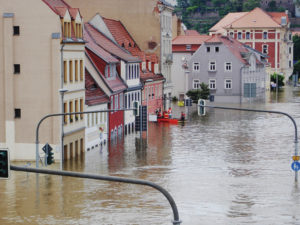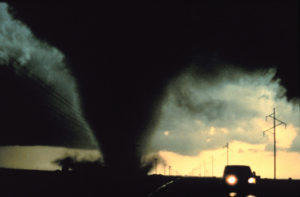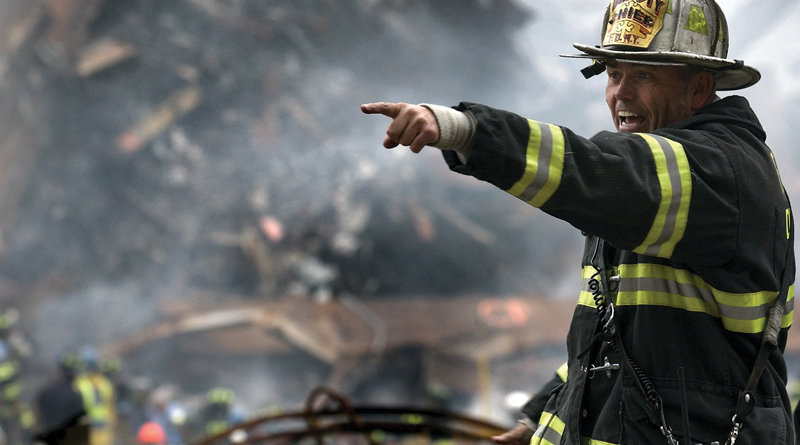Disaster Planning: Are You Prepared if Mother Nature Comes Calling?
Mother Nature’s wrath can be manifested in any size, shape or form. Whether it be from hurricanes, tornadoes, earthquakes, snowstorms, fires, or floods, the impact of a natural disaster can be immeasurable. Natural disasters can and have caused devastating and costly damage to communities and resorts across the globe and they do not discriminate based on location: resorts in all geographic locations are susceptible. Unfortunately, it is often times only after a disaster rears its unkind face that management starts to think about its disaster plan. Then, all of the stakeholders, including management, vacationers, residents, and owners alike, are left thinking “what could we have done differently?”
The reality is, bad things happen, Mother Nature happens, and we can’t predict the future. What we can do is be prepared. As the quote goes, the best offense is a great defense. Proper disaster planning has the potential to save lives and minimize the time, damage, and costs of recovery. So how can timeshare resort stakeholders prepare? The extent of the steps needed to prepare vary greatly depending on the size and number of units of the resort, the amenities offered to owners and guests, geographic location, and responsiveness of owners/guests. Regardless, there are some important measures that can be taken by any resort to help mitigate the destructive effects of natural disasters and/or aid in recovery when one should occur.
Create a Disaster Plan

The more general the plan, the easier correct? This may be true from an ease of completion standpoint, but non-specific plans can lead to inadequate responsiveness in times of panic and ultimately lead to unnecessary costs and possibly injury Resort management, with the help of the board of directors, when applicable, should detail the plan in a manner that considers all possible disasters and outcomes prioritized by risk and importance. At a minimum, the plan should account for all types of natural events that are common to the resorts geographic location and include an up-to-date drawing of the property and important parts such as water shut-off valves, backup generators, lifesaving equipment, and fire extinguishers etc. The plan should be available at a moment’s notice and all team members should be well versed in both the location of the plan and what it contains. At the end of the day, Management’s primary focus should be to ensure the safety and livelihood of its guests. Secondarily, Management should address the physical property concerns.
Establish Expectations
Every employee should know and understand the disaster plan, and their roles in it. Not all staff have the same capabilities. Roles need to be specifically designed for each person and should not be general. This may mean electing an emergency management team and documenting all contact numbers, including alternate phone numbers, and determining an emergency operations center location. By doing so, management can ensure each employee knows what to do and where to go when disaster strikes. The best way to guarantee good execution is through specific assignments and periodic and regular training sessions with all staff.
Related: Assessing and Understanding Organizational Risk in the Vacation Ownership World
Review Governing Documents
During disaster planning, management should review the relevant governing documents to ensure the disaster plan in is compliance with them as well as any local, state or federal regulations. Certain organizational documents and state statutes set requirements for the use of restricted funds, access to units for repairs, insurance disbursement oversight, and owner’s access to certain information and decision-making during an emergency. If during review management identifies any barriers that may prevent a timely and effective recovery response, they should, with the help of the board of directors, consider steps necessary to remove those barriers and provide adequate “emergency” powers to the emergency management team.
Perform a Risk Assessment
A risk assessment analysis can be a useful tool in determining areas where a resort might be susceptible to lose, the extent of the loss, and ways to prevent the loss. From the signage to the roof, from the interior fixtures to the pool, even the minor components of the resort experience should be considered when assessing the risk of loss. In the process of establishing insurance coverage limits for a timeshare resort, the insurer will often assess the resort’s major components to ensure coverage is adequate in the event of an emergency. The insurer may also suggest disaster mitigation resources. FEMA suggests the following disaster mitigation tools:
- For hurricanes – hurricane/storm shutters
- For tornadoes – laminated or impact-resistant glass
- For earthquakes – retrofitted masonry
- For floods – accessible sandbags and elevated structures
- For lightning Strikes – lightning rods
- For wildfires – interior and exterior fire sprinkler systems

For vacation ownership resorts, a reserve study should be performed and updated at least annually to establish estimated replacement costs for the components of the resort. Although the replacement reserves are not intended to provide relief in the event of a disaster, depending on its designated purpose, some of these funds may be available for disaster mitigation. Following a disaster, properly funded reserve funds may be available to offset some of the uncovered insurance claims or pay for immediately necessary repairs while the insurance claims are being settled. In some cases, it may be possible to establish specific contingency reserve funds which are used at the discretion of the Board of Directors, such as an insurance deductible reserve.
Note that a risk assessment is not a one-time process. All kinds of factors change annually that could affect identified risks, either raising or lowering their priority and new risks can come to light. This is an on-going process which should take place annually for many reasons, including to determine if new risks need to be addressed and whether the previous action items were adequately implemented.
Related: Accounting for Disasters and Insurance Proceeds: Is Your resort Prepared?
Utilize Technology
The storage of the disaster plan information should be done electronically as well physically. In case a disaster destroys the property, access to the plan needs to remain available. The most common method for this is the use of off-site backups or cloud based backups. Important information to keep inventoried include:
- List and location of all banking information and representative.
- Vendor contact information and contracts (including accountants, attorneys, insurance agents, and security service reps)
- Insurance policies including limits and deductible information
- List of owners’ names, addresses and contact information
- Detailed list of physical furniture, fixtures and equipment
- List and location of Emergency supplies (first aid kits, radios, flashlights, batteries, etc.)

With communication tools at the tips of our fingers, getting the message out has never been easier and has also become an expectation of owners and guests. By using timeshare resort specific channels and email, the delivery time of disaster messages can be instantaneous and effective. Establishing and training staff on the preferred method of communication should be encompassed with the regular and routine training sessions. Upon arrival, staff should make all guests aware of the methods of communication available in case of emergency. While the use of technology can be effective, more primitive methods should still be accessible in times where technology may not be available.
Disasters typically strike unexpectedly. When they do occur, reaction and recovery can consume some of the resorts most valuable assets, people and resources. Recovery can take weeks, months or even years depending on the severity of the disaster. Proper disaster preparedness requires the existence of a disaster plan, the timely and accurate execution of the plan, and the financial and physical capabilities to execute the plan. With appropriate planning, a vacation ownership resort can maximize response and possibly minimize damage as well as ensure the resort and its owners and guests are back to normal as quickly as possible. There is no need to recreate the wheel when making a plan. Many resorts and companies have made solid plans that can be used as a base to start the process. So don’t delay – get started today!
ABOUT WITHUMSMITH+BROWN, PC (WITHUM)
Withum provides clients in the hospitality, vacation ownership and other industries with assurance, accounting, tax compliance, and consulting services. For further information about Withum and the services they provide to the industry, contact Lena Combs (LCombs@withum.com) at (407) 849-1569 or visit www.withum.com.



